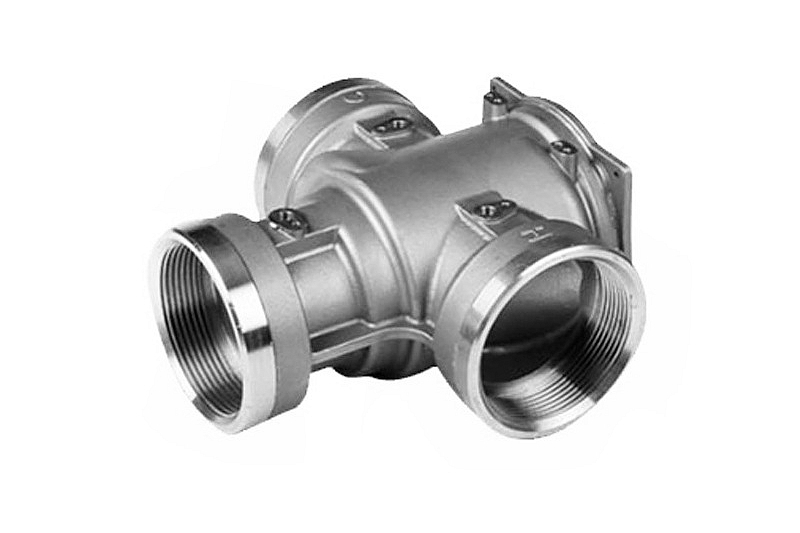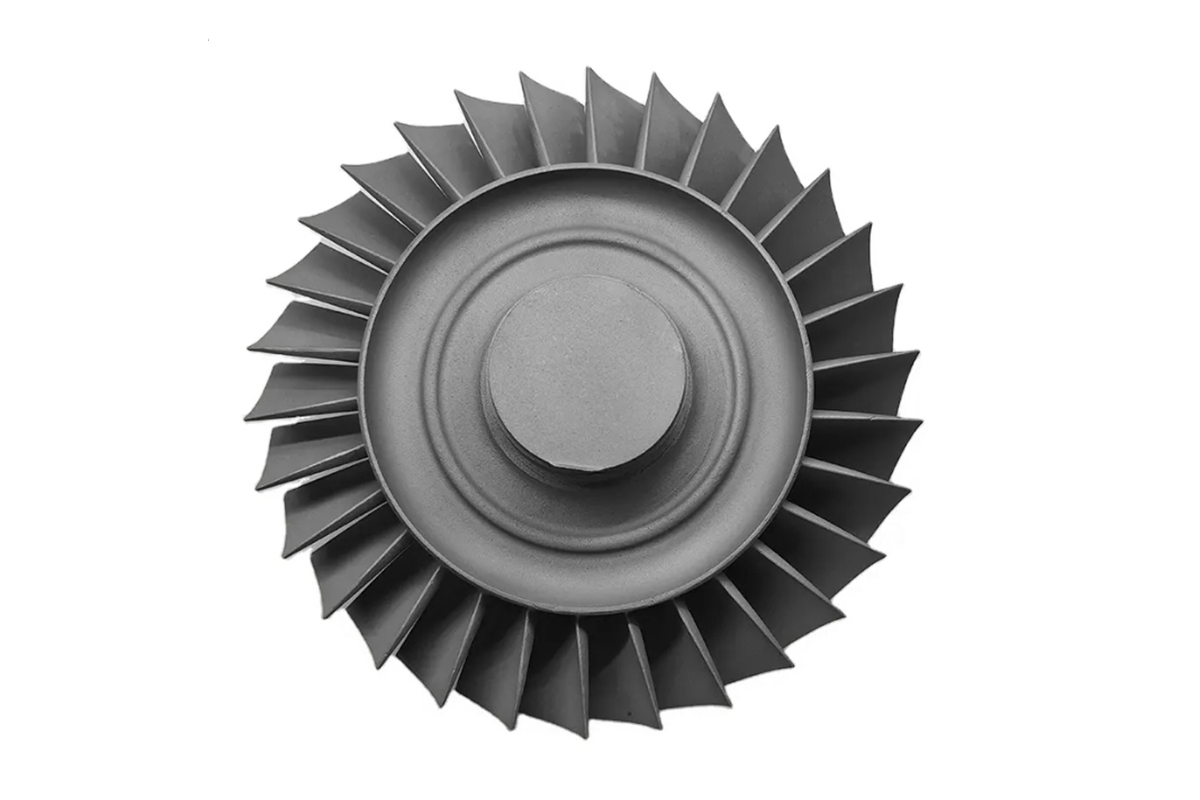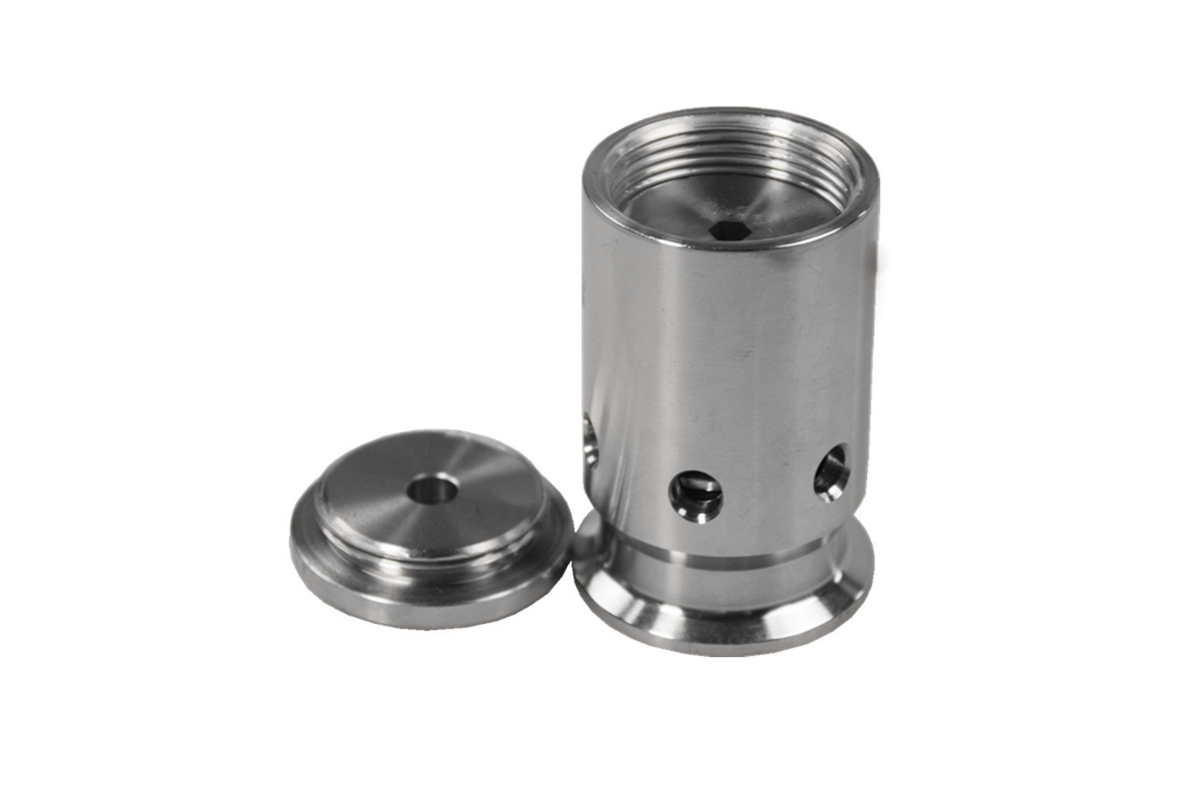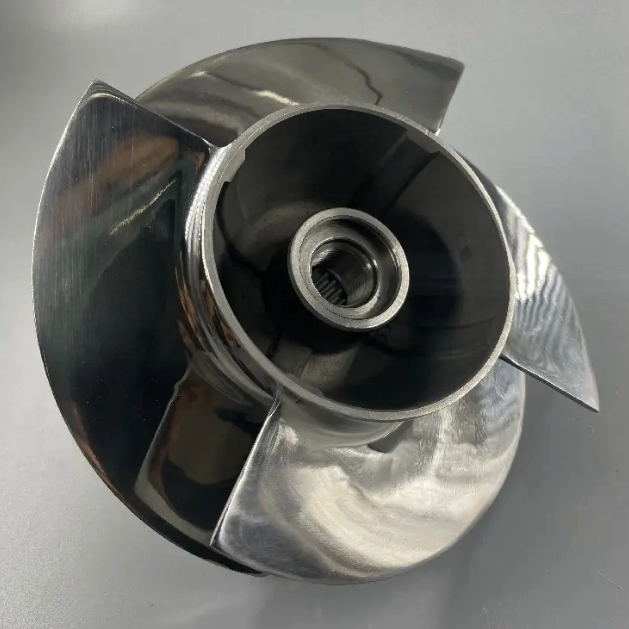Superalloy Sterilization Equipment Parts Manufacturer
Induction of Superalloy Sterilization Equipment Parts
In industries where hygiene, safety, and reliability are paramount, sterilization equipment is essential to prevent contamination, ensure cleanliness, and uphold strict health standards. Superalloy sterilization equipment parts are indispensable in these systems, as they must withstand extreme conditions, including high temperatures, high-pressure environments, and exposure to aggressive cleaning agents. Superalloy components' durability and corrosion resistance make them the ideal choice for sterilization equipment, which is used extensively in medical, pharmaceutical, and food processing industries.

Superalloys, including well-known brands like Inconel, Hastelloy, and Monel, exhibit exceptional thermal degradation, oxidation, and corrosion resistance. It ensures sterilization equipment maintains peak performance and structural integrity even under continuous exposure to harsh environments. These parts are integral in sterilization systems that require high resistance to temperature fluctuations and chemical exposure, making them ideal for applications in which reliability and longevity are crucial. Components such as flanges, connectors, fittings, and couplings are just a few examples of superalloy sterilization equipment parts, each designed to meet the stringent requirements of sterilization processes.
Superalloys Used in Superalloy Sterilization Equipment Parts
Suitable superalloy material is essential for manufacturing sterilization equipment parts that meet specific performance requirements. Three commonly used superalloy families include Inconel, Hastelloy, and Monel. Each offers unique properties that make it suitable for different applications, particularly in industries that rely on frequent sterilization cycles.
Inconel Alloys
Inconel alloys are widely known for their outstanding oxidation and corrosion resistance, especially at high temperatures. This family of nickel-chromium-based alloys performs exceptionally well under high-stress conditions, making them a preferred choice for sterilization equipment. Commonly used grades include:
Inconel 625: With its impressive fatigue strength and oxidation resistance, Inconel 625 is widely used in sterilization equipment exposed to fluctuating temperatures and stress. This alloy is often found in components that experience frequent temperature cycling, as it maintains stability without sacrificing performance.
Inconel 718: Known for its high strength at elevated temperatures, Inconel 718 is highly resistant to oxidation and corrosion, making it ideal for components that must withstand pressure and extreme heat. This grade is popular in sterilization applications where equipment parts are exposed to intense conditions over long periods.
Inconel 825: With excellent resistance to reducing and oxidizing acids, Inconel 825 is suitable for sterilization applications in aggressive environments, mainly where acidic solutions are used. It is frequently used in parts that require high chemical stability.
Hastelloy Alloys
Hastelloy alloys offer superior corrosion resistance, particularly in chemically aggressive environments. This family of superalloys is ideal for sterilization equipment that comes into contact with a range of harsh chemicals.
Hastelloy C-276: This alloy is highly resistant to pitting and stress corrosion cracking, making it an excellent choice for sterilization parts exposed to cleaning chemicals and corrosive solutions. Hastelloy C-276 is frequently used in components that must maintain structural integrity despite frequent exposure to sterilization agents.
Hastelloy C-22: Known for its resistance to oxidizing and non-oxidizing acids, Hastelloy C-22 is commonly used in environments that alternate between acidic and alkaline conditions. This flexibility makes it suitable for sterilization equipment that must endure varying chemical exposures.
Hastelloy X: This alloy balances strength and oxidation resistance at elevated temperatures, making it an ideal choice for high-temperature sterilization applications. Hastelloy X is often used in parts with high temperatures and aggressive cleaning agents.
Monel Alloys
Monel alloys, particularly Monel 400 and Monel K500, are known for their exceptional corrosion resistance, especially in marine and acidic environments. These alloys are highly effective in parts exposed to corrosive chemicals, seawater, and acidic solutions.
Monel 400: Known for its strong resistance to seawater corrosion, Monel 400 is frequently used in sterilization equipment that may come into contact with acidic or corrosive cleaning agents. This alloy is particularly effective in applications requiring both durability and corrosion resistance.
Monel K500: With added age-hardening properties, Monel K500 combines the strength of Monel 400 with improved mechanical properties, making it suitable for sterilization equipment requiring enhanced durability and resistance.
Monel 404: This alloy is highly resistant to hydrofluoric acid, making it suitable for sterilization of parts exposed to acidic solutions. Monel 404 is typically used in applications requiring exceptional corrosion resistance in highly aggressive chemical environments.
Typical Superalloy Part Manufacturing Process
Advanced manufacturing techniques are employed to create superalloy parts for sterilization equipment. These processes ensure that each component meets the highest performance, durability, and corrosion resistance standards. The primary manufacturing methods include vacuum investment casting, powder metallurgy, and precision forging.
Vacuum Investment Casting
Vacuum investment casting is an exact method for producing complex shapes with excellent surface finishes, making it ideal for superalloy components. This process is particularly beneficial in producing high-performance superalloy parts for sterilization equipment, as it offers exceptional dimensional accuracy and material integrity.
Superalloy Single Crystal Casting: Single crystal casting ensures a uniform crystalline structure throughout the part, reducing the risk of creep and thermal fatigue. This process is often used for high-stress components in sterilization systems where resistance to high temperatures is critical. Microstructure refinement through heat treatment further boosts creep resistance.
Superalloy Equiaxed Crystal Casting: This casting method promotes the formation of equiaxed crystals, which enhances the toughness and fatigue resistance. It is suitable for parts exposed to cyclic stress, ensuring stability and durability in sterilization processes. Equiaxed crystal casting benefits include improved toughness and fatigue resistance, which are vital for cyclically stressed components.
Superalloy Directional Casting: Directional casting aligns the crystal growth in a specific direction, improving the material's material's mechanical properties. This process is ideal for components that encounter directional stresses, such as connectors and couplings in sterilization equipment. Directional solidification enhances mechanical properties by aligning grain structure along the stress axis.
Unique Steel Investment Casting: Special steel alloys can be used in investment casting for specialized requirements, providing additional flexibility for custom applications. This technique allows for precise dimensional control and customizability for unique sterilization components.
The vacuum investment casting process ensures that each part meets sterilization equipment's stringent strength, corrosion resistance, and thermal stability requirements.
Powder Metallurgy
Powder metallurgy (PM) is a highly effective method for producing superalloy parts with complex geometries and uniform microstructures. Fine metal powders are compacted into molds and then sintered at high temperatures to create a dense, solid part. This method is particularly advantageous for parts that require uniformity and high density, as it ensures minimal porosity and excellent material consistency. Powder preparation techniques enhance microstructure consistency, ensuring high-quality material properties in final components.
Powder metallurgy is especially useful in producing sterilization equipment parts that need to withstand constant high temperatures and chemical exposure. Parts manufactured using this process exhibit high strength, wear, and corrosion resistance, making them suitable for sterilization environments where reliability is critical. Powder metallurgy advantages include controlled particle size and alloy consistency, which are essential for durable, high-strength components.
Precision Forging
Precision forging shapes superalloy materials through controlled deformation, enhancing their mechanical properties and structural integrity. Several types of forging are commonly used for manufacturing sterilization equipment parts:
Rough Forging: Rough forging is used to form the basic shape of the component before it undergoes additional processing. This step helps create parts with larger dimensions, which are then refined for precision. It is critical for reducing waste and optimizing material use.
Free Forging: Free forging allows for flexibility in creating complex shapes without restrictive dies, making it ideal for customized sterilization parts. This method is suitable for parts with unique geometries. Free forging benefits include reducing porosity and improving mechanical strength, which is critical for reliable performance.
Isothermal Forging: In isothermal forging, the temperature of the workpiece is kept constant to avoid deformation and ensure a uniform grain structure. This process is beneficial for parts that need consistent properties, such as strength and thermal stability, for reliable operation in sterilization environments. Isothermal forging advantages include enhanced thermal stability and resilience, essential for high-performance components.
Each forging method contributes to creating sterilization parts that are robust, durable, and capable of withstanding the high temperatures and pressures inherent in sterilization applications. The benefits of precision forging ensure that parts meet stringent quality standards, providing both strength and durability.
Prototyping for Superalloy Sterilization Equipment Parts
Prototyping and low-volume production are essential in developing and refining superalloy sterilization equipment parts. The ability to rapidly produce and test prototypes allows for efficient design validation and optimization, ensuring that parts meet functional and material requirements before full-scale production.
3D Printing Service
3D printing, also known as additive manufacturing, is a valuable tool for rapid prototyping. It enables the creation of intricate and complex parts quickly and cost-effectively, allowing immediate testing and design modifications. In the context of superalloy sterilization parts, 3D printing provides flexibility, enabling manufacturers to explore various designs without committing to expensive tooling costs.
Superalloy 3D Printing
Superalloy 3D printing is an advanced process involving powdered superalloy material to produce parts layer by layer. This technology is ideal for creating prototypes or small production runs, as it allows for intricate details and customization that mimic the final properties. Superalloy 3D printing can produce high-quality, functional prototypes that closely resemble the performance of the finished parts.
Superalloy CNC Machining
CNC machining offers precision and flexibility, especially in low-volume production. CNC machines use precise, computer-controlled cutting tools to shape parts according to specifications. It is ideal for superalloy sterilization parts requiring tight tolerances and detailed features, ensuring the final part meets design and functional criteria.
Superalloy Sterilization Equipment Parts Post-Process
Post-processing is crucial for enhancing the final properties of superalloy sterilization parts, ensuring they are prepared for high-performance applications in harsh environments. Standard post-processing methods include:
Hot Isostatic Pressing (HIP): HIP applies high temperature and pressure to eliminate internal voids, resulting in denser parts with enhanced strength and durability. This process is essential for sterilizing equipment parts and improving their structural integrity for reliable operation under high-stress conditions.
Heat Treatment: Heat treatment alters the mechanical properties of superalloys, increasing hardness, ductility, and strength. By optimizing the grain structure, heat treatment ensures that parts can withstand repeated high-temperature sterilization cycles without compromising performance.
Surface Finishing: Surface finishing techniques, such as polishing and coating, improve corrosion resistance and provide a smooth, clean finish. Surface finishing is essential for sterilization equipment parts, as it helps prevent bacterial build-up and corrosion in hygienic applications, ensuring long-term cleanliness and durability.
These post-processing steps ensure that sterilization equipment parts remain reliable and effective throughout their service life.
Superalloy Sterilization Equipment Parts Quality Inspection
Quality inspection is critical to verify that superalloy sterilization parts meet rigorous industry standards. Neway employs several advanced testing methods to ensure each part is defects-free and performs as expected in demanding environments.
X-ray Inspection: X-ray inspection reveals internal defects like voids and cracks, ensuring that each structural integrity meets industry standards. This non-destructive testing method is essential for maintaining part reliability under high-pressure and high-temperature conditions.
Coordinate Measuring Machine (CMM): CMM measures the part's dimensions with high precision, confirming that they meet exact design specifications. This measurement process is crucial for dimensional accuracy verification, especially for parts that must adhere to tight tolerances.
Metallographic Microscopy: This method examines the microstructure of superalloy materials, ensuring that the grain structure and phase distribution meet quality standards for strength and thermal resistance, much like metallographic analysis in superalloy parts production, which verifies material integrity in turbine components.
These quality inspections help maintain the reliability and safety of superalloy parts in sterilization equipment, ensuring that each part delivers optimal performance.
Industry Applications of Superalloy Sterilization Equipment Parts
Superalloy sterilization equipment parts are essential in industries requiring stringent hygiene and durability standards:
Healthcare: Hospitals and clinics rely on sterilization equipment to ensure that surgical tools and equipment remain free from contamination. Superalloy components provide durability and resistance for frequent, high-temperature sterilization cycles.
Pharmaceuticals: In pharmaceutical manufacturing, sterilization equipment is essential to prevent contamination during production. Superalloy parts in sterilization systems ensure high cleanliness while withstanding exposure to corrosive chemicals and high temperatures.
Food Processing: The food processing industry relies on sterilization equipment to maintain hygiene standards. Superalloy parts ensure reliable operation and resistance to the cleaning agents used in food production facilities.
Superalloy sterilization equipment parts support these industries by ensuring safety, reliability, and durability under the most challenging conditions.
FAQs about Superalloy Sterilization Equipment Parts Manufacturing
What are the most suitable superalloys for sterilization equipment parts?
How does powder metallurgy benefit superalloy sterilization equipment parts production?
Why is Hot Isostatic Pressing (HIP) important in post-processing superalloy parts?
What quality inspection methods ensure superalloy sterilization parts meet standards?
How does 3D printing support prototyping for superalloy sterilization parts?



